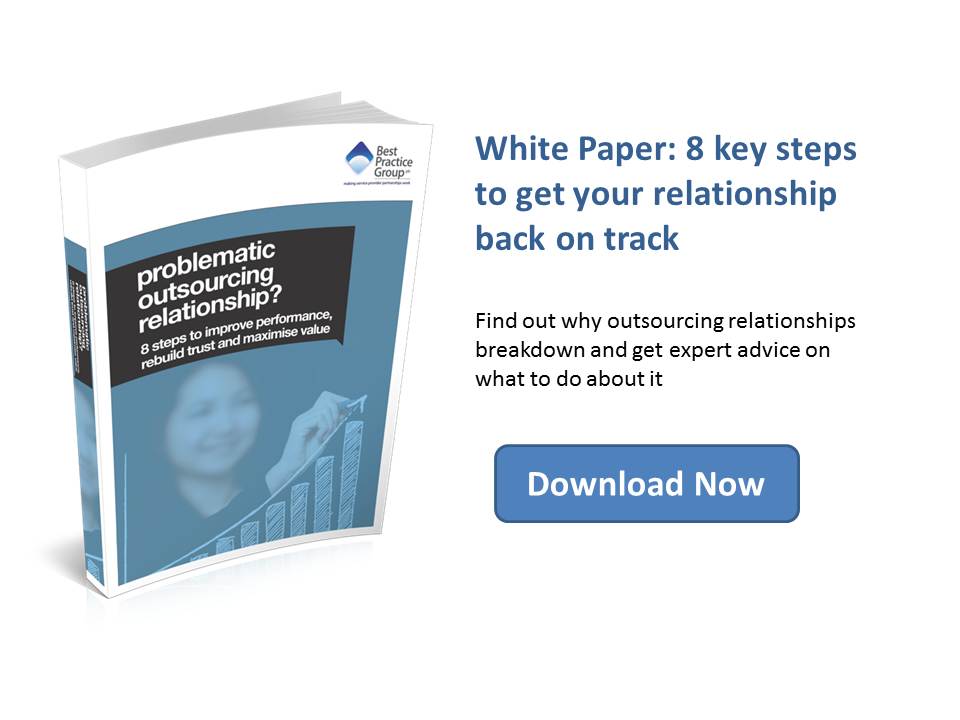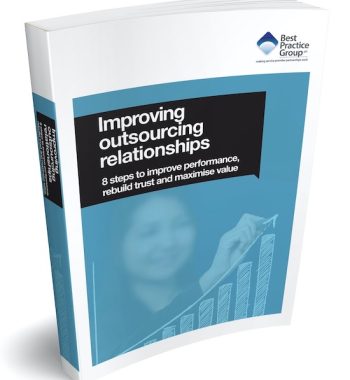 You’ve decided that you want to outsource, but you haven’t decided which of the outsourcing methods is the best. You have internal processes that are functioning well, and outsourcing seems the next logical step in terms of reducing overheads and cost. It is the dream solution – when executed well. But unfortunately, many service provider relationships break down for a number of reasons – many of which are present at the very inception of the idea.
You’ve decided that you want to outsource, but you haven’t decided which of the outsourcing methods is the best. You have internal processes that are functioning well, and outsourcing seems the next logical step in terms of reducing overheads and cost. It is the dream solution – when executed well. But unfortunately, many service provider relationships break down for a number of reasons – many of which are present at the very inception of the idea.
As soon as you make an ‘in principle’ decision to outsource, one of the first things you must consider is how. Outsourcing means different things to different people, and making an informed decision as to which path you head down can make all the difference between outsourcing success or failure.
With that in mind, let’s take a look at the three different outsourcing methods, and how they might suit your objectives.
1. Outsourcing
Let’s start with outsourcing as it is generally understood.
Outsourcing is the process of having a set of objectives, process and business outcomes delivered by an external partner. The partner can seek to deliver the service internally, but it is more common to see wider service contracts delivered through a combination of the partner and third parties.
There is a clear hierarchy in such an agreement – the third parties are responsible and accountable to your partner, and your partner is responsible and accountable to you.
The key factor in outsourcing is that you are not engaged in any part of the outsourced service internally. The buck stops with your partner – your responsibility is in monitoring the outsourcing company’s performance against specific KPIs to ensure that it is meeting your business objectives.
To many, outsourcing is the most appealing path to follow. In theory, it allows you to parcel up and pass on an entire section of your business.
2. Out-Tasking
This is the least dramatic form of outsourcing.
Out-tasking is the process of breaking up the delivery aspects of a particular service, and dealing with certain parts internally, and others externally. As a contrast to outsourcing, if you are engaged in partial delivery of services, you are out-tasking – not outsourcing.
This method of outsourcing is ideal if your in-house team does not have the expertise to handle certain service aspects. The key difference between out-tasking and outsourcing is that you retain overall risk and responsibility for the delivery of the service.
Out-tasking does not relieve you of responsibility, but it can be a useful tool for relieving in-house workload and utilising specialised third party skill-sets.
3. Multi-Sourcing
As you might guess from its name, multi-sourcing (also known as “intelligent outsourcing”) involves engaging with a number of specialised partners for each element of a service.
There are a number of advantages over and above outsourcing:
- You can aim for a focused solution from a true expert provider for each deliverable.
- You enjoy greater competition during the sourcing of each aspect of the service.
- Contingencies are reduced due to each partner only having accountability to deliver one element of service.
- Additional management costs that would have been applied by an outsourcing partner are removed.
- Ending an underperforming contract is far less impactful when compared to an entire outsourcing agreement.
In terms of cost savings and risk reduction, multi-sourcing seems the ideal solution. Experience teaches us that procurement costs aside, you are far more likely to end up with a more cost effective and efficient solution for achieving your business outcomes via multi-sourcing.
However, multi-sourcing is not without its challenges. It requires multiple contracts and a far greater allocation of internal resources (in theory at least) for programme and contract management to ensure that your multiple partners deliver to your expected objectives. And perhaps most importantly, you are still left with ultimate accountability and risk for delivering the combined service objectives.
Which Method is For You?
When it comes to deciding how to outsource, there is no one-size-fits-all solution. The method you choose will depend upon a variety of internal factors.
Having said that, if you require a large scale solution, multi-sourcing (when executed well) is in our experience the superior option to outsourcing. Outsourcing is viewed by many to be an outdated format that performs poorly, whereas multi-sourcing allows for true partnerships to evolve between buyer and provider.


